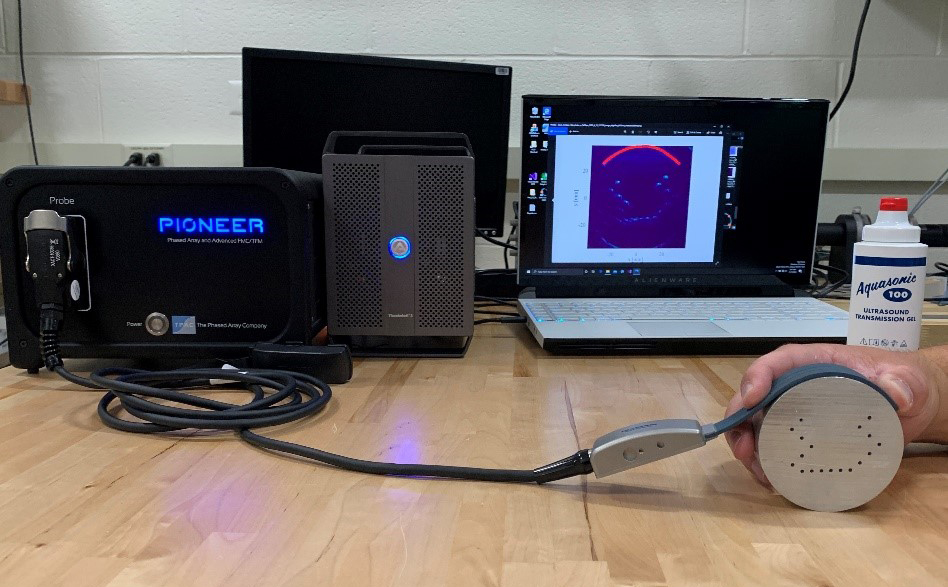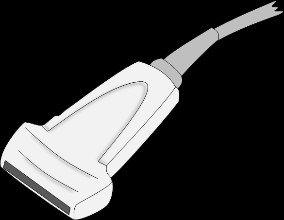WRIGHT-PATTERSON AIR FORCE BASE, Ohio – The Air Force Research Laboratory recognizes the need for remote physiological monitoring during en route medical care. As such, they have conceived a flexible ultrasound device to serve this requirement.
Performing medical ultrasound usually requires the use of a hand-held rigid arrangement of transducers that send ultrasonic pulses into the tissue and receive resulting reflections from the tissue. An image of the tissue can be reconstructed based off of the time it takes to send and receive the reflected ultrasonic pulse.
It would be advantageous to enable hands-free continuous ultrasound monitoring by replacing the hand-held wand and technician with a flexible transducer array that can be applied directly on a person.
The location of each transducer is necessary to properly identify subsurface features and structures when forming the image. Currently, the transducer location is unknown when the flexible patch of transducers is placed on an uneven surface.
AFRL has developed an algorithm to determine the location of transducers in a flexible arrangement, so that an ultrasound image can be determined without for a rigid array of transducers.
This new technology could eventually replace hand-held wands operated by ultrasound technicians, enabling hands-free continuous monitoring of wounds and vital medical information such as respiration rate, heartbeat, and feeding tube placement, none of which are currently available.
This flexible ultrasound device could also simplify the emergency care delivery process by providing real-time information and automated warnings to diagnose medical problems in an expeditious manner by enabling constant monitoring of injured airmen.
“We built a prototype device and have a patent pending,” said Dr. Abigail Juhl, program manager in the Materials and Manufacturing Directorate. “The use of this device may enable a single Airman to monitor the vital statistics of multiple patients simultaneously, freeing up other medical staff.”
“We are excited about the promise of the new technology for en route care and anxious to begin testing the prototype,” said Dr. Carson Willey of UES Inc.
There are many challenges to be completed before transitioning to a commercialized product. Transducers must be sourced, power minimized, hardware miniaturized, software developed and a user-friendly interface is necessary.
The use of a flexible ultrasound device that can monitor vitals en route and be simple to use is a tremendous benefit in saving a life.
This technology is currently able to be licensed for commercialization through the Office of Technology Transfer & Partnerships in AFRL’s Materials & Manufacturing Directorate. For more information, please contact the Corporate Communications Office at AFRL.RX.CorpComm@us.af.mil.

Flexible transducer prototype determines the location of transducers in a flexible array, so that ultrasound image can be determined without a rigid arrangement of transducers. (Courtesy photo)

The new flexible phased array probe was designed and manufactured to have both flexibility and mechanical integrity combined with improved acoustic properties. (Courtesy photo/Olympus Industrial Resources)

Conventional ultrasound hand-held rigid array of transducers. (Courtesy graphic)

